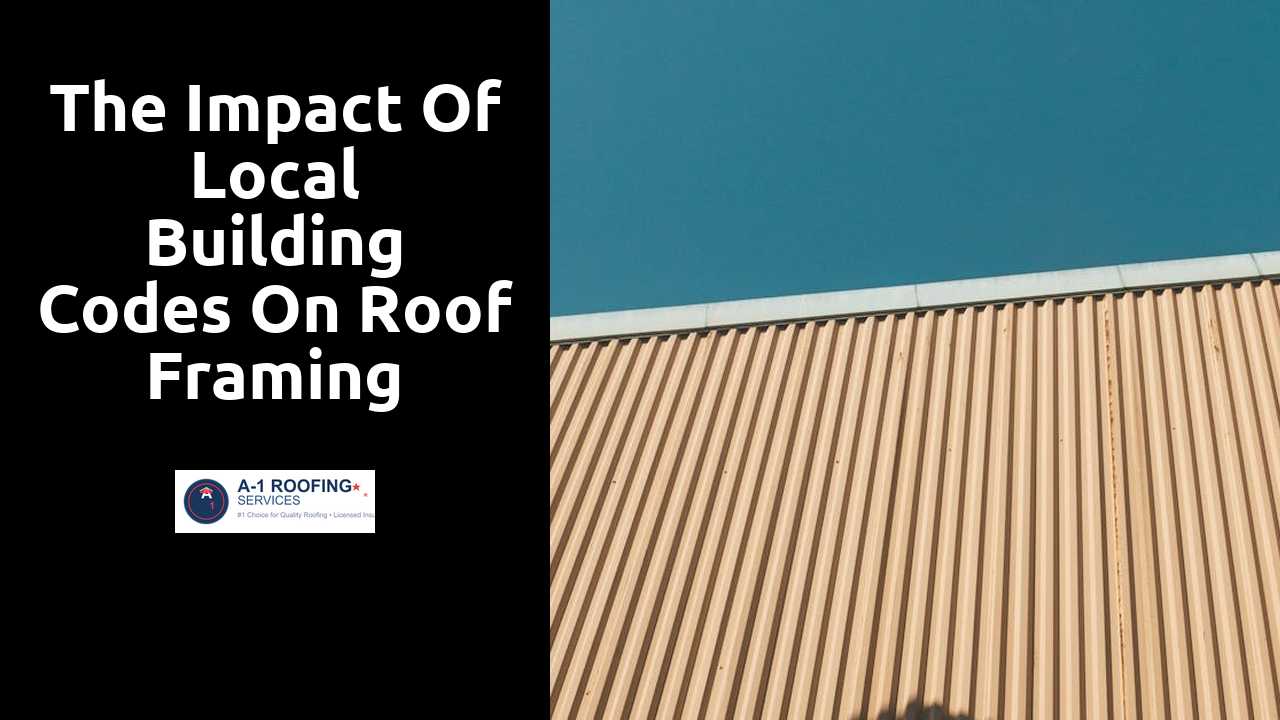
The Impact of Local Building Codes on Roof Framing Design
Table Of Contents
Role of Engineers and Architects
Engineers and architects play pivotal roles in interpreting and adhering to local building codes when it comes to roof framing design. Their expertise combines structural integrity with innovative aesthetics. Engineers focus on the technical specifications, ensuring that the design meets safety and performance standards. Architects, on the other hand, integrate functionality with visual appeal, creating spaces that are not only safe but also inviting. Together, they navigate zoning laws and local regulations to develop compliant structures.
Collaboration between these professionals is essential for successful project outcomes. Open lines of communication facilitate the sharing of knowledge and ideas, leading to designs that balance regulatory requirements with architectural vision. As building codes evolve, the partnership becomes even more critical. Continuous education on local amendments and emerging trends allows both architects and engineers to stay ahead, ensuring that the designs they produce are both compliant and innovative.
Continue reading this article for more information.
Collaboration for Optimal Roof Design
Successful roof design hinges on effective collaboration between architects and engineers. Both professionals bring their unique expertise to the table, ensuring that structural integrity and aesthetic appeal are met. Architects focus on the creative aspects, emphasizing visual harmony and functional layout. Engineers, on the other hand, ensure that the design will withstand environmental stresses and comply with local building codes.
Communication plays a critical role throughout the design process. Regular meetings and discussions facilitate the exchange of ideas and allow for early identification of potential issues. This teamwork not only improves the overall quality of the roof design but also helps in adapting to any changes in local regulations or climatic conditions that could impact structural performance. By fostering a collaborative atmosphere, both architects and engineers can create robust roofing systems that meet safety standards while fulfilling design expectations.
Impact of Climate on Roof Framing
Climate significantly influences the design and materials used in roof framing. Areas with heavy snowfall require roofs that can bear substantial weight, often necessitating a steep slope and robust structural supports. In contrast, regions prone to high winds may adopt lower pitches and materials that can withstand lateral forces. Humidity is another factor; in tropical climates, roofs must incorporate ventilation and moisture-resistant materials to prevent mold and deterioration.
Local temperature variations also affect thermal expansion and contraction of roofing materials. Engineers and architects must consider these factors to optimize roof longevity and performance. Using materials suited for specific climates can mitigate the risk of damage over time, ensuring roofs remain functional and safe. Adapting designs to local weather patterns is essential for promoting resilience in building structures.
Adapting Designs to Local Weather Conditions
Designing roofs to withstand local weather conditions is essential for ensuring structural integrity and longevity. In areas prone to heavy snowfall, engineers may incorporate steeper slopes to facilitate snow shedding. Conversely, regions with high winds necessitate the use of more robust framing techniques and materials designed to enhance resistance against uplift forces. These adaptations minimize the risk of structural failure during extreme weather events, protecting both the building and its occupants.
Understanding the local climate enables professionals to select appropriate roofing materials that can withstand the elements. For instance, regions with high humidity levels might benefit from materials that resist mold and corrosion. On the other hand, areas with intense sunlight demand UV-resistant materials to prevent deterioration over time. By tailoring designs to meet local weather challenges, architects and builders not only adhere to regulations but also enhance the performance and safety of their structures.
The Consequences of Non-Compliance
Ignoring local building codes can lead to serious consequences for both builders and homeowners. Structural failures may occur if the roof framing design does not adhere to established safety standards. These failures can result in significant property damage, increased repair costs, and even endanger lives during extreme weather events. Furthermore, non-compliance can result in increased scrutiny from regulatory bodies, leading to fines and the possibility of mandated corrective actions.
The legal implications of failing to comply with building codes can be severe. Homeowners may find themselves ineligible for insurance claims related to storm damage or other incidents if their roof is deemed non-compliant. Additionally, builders face the risk of litigation from clients seeking compensation for losses that arise from structural deficiencies. Such legal challenges can tarnish reputations and hinder future business opportunities, making adherence to local regulations crucial for long-term success.
Risks and Legal Implications
Non-compliance with local building codes can lead to significant risks for both builders and property owners. Structures that do not meet established requirements may suffer from inadequate safety, increasing the likelihood of catastrophic failures. This deficiency can result in property damage, injury, or even loss of life, placing a heavy burden on those involved.
Legal implications often accompany violations of building codes. Authorities may impose fines or require costly modifications to rectify issues. In severe cases, irresponsible practices could lead to lawsuits from affected parties. The stakes are high, emphasizing the need for strict adherence to codes in roof framing design and construction practices.
Related Links
Techniques for Framing Complex Roof DesignsHow to Ensure Proper Load Distribution in Roof Framing